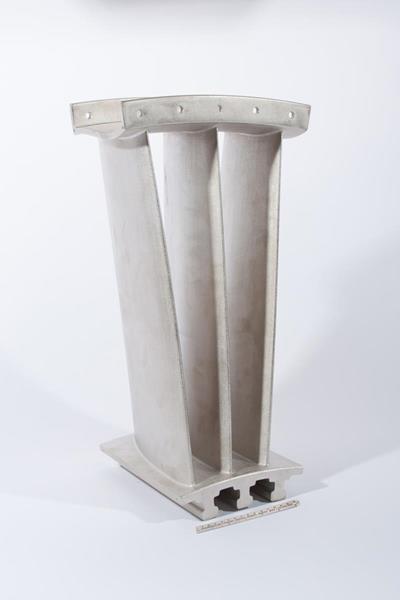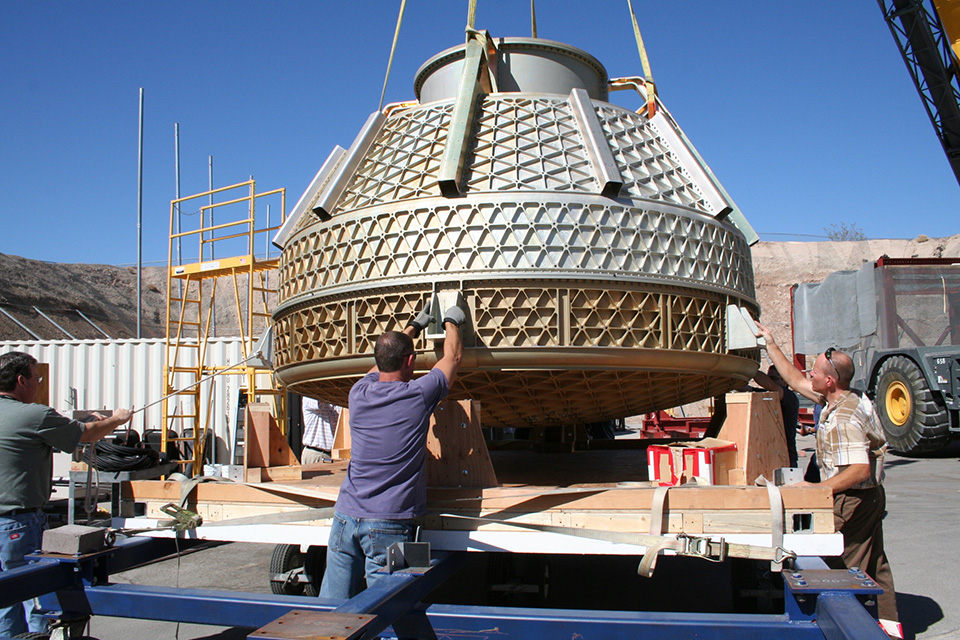Oxford Performance Materials (OPM) has commercially launched its new 3D printing material that combines PEKK (Polyetherketoneketone) with nickel, named OXFAB®–Ni. With the material the Connecticut based company expects to produce “3D-printed PEKK-based parts that replace high performance aluminum alloys for aerospace and industrial applications.”
Founded in 2000, Oxford Performance Materials specialises in thermoplastics and particularly PEKK based materials. In addition, this plated thermoplastic material, has been defined by a specific set of attributes in the OPM B-Basis database which is developed alongside NASA and Northrop Grumman.

Replacing aluminum
According to Oxford Performance Materials (OPM), the OXFAB®–Ni material has the same weight and strength properties as high performance aluminum alloys yet with near limitless shape.
President of OPM Aerospace & Industrial, Lawrence Varholak explains that – with the OXFAB®–Ni – the company can now offer its “aerospace and industrial customers nickel-plated, fully functional end-use 3D-printed structural parts with a flexural strength-to-weight ratio equivalent to high performance titanium alloys such as 6AL-4V.”
OPM has developed the Nickel plated material using its proprietary PEKK material, OXPEKK®. This material has already proven worth for aerospace application with Boeing enlisting OPM to produce 3D printed PEKK parts for its CST-100 Starliner spacecraft. Expanding into nickel-plating will further OPM’s offerings and provide a material solution that can compete with metal.

3D printing in space
Additive manufacturing is continuously proving its space application, and 3D printed metal seems to be a key factor. European company Thales Alenia Space has announced that it will expand the size of metal 3D printed parts that it launches into space this year. Metal 3D printed parts enable lightweight yet strong support structures and are often used to launch satellites.
However while metal has significant application, 3D printing PEKK may be a more accessible option for ease of printing and expense. It may be easier to 3D print large OXFAB–Ni parts than a metal equivalent due to the required printing environments associated.
Especially with recent innovations into thermoplastic printing. Several 3D printer manufacturers are attempting to create industrial machines capable of printing in thermoplastics like PEKK/PEEK. One example is Canada’s AON3D, that has released the AON-M 3D printer to be an affordable option for 3D printing thermoplastics.
For all the latest aerospace 3D printing news, subscribe to our newsletter, follow us on twitter and like us on Facebook.
Featured image shows a jet engine. Photo via Oxford Performance Materials.


